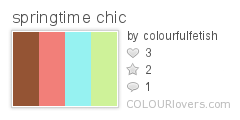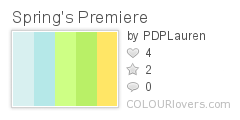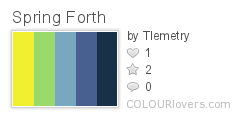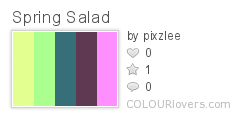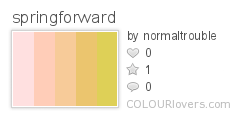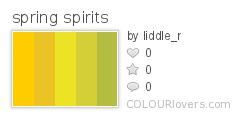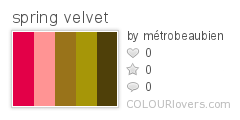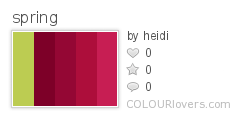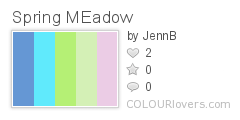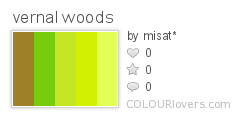Ten on Tuesday: Ten Ways to Use Acrylic Paint with Polymer Clay
1. Antiquing
To "antique" something-- whether it's made of polymer clay, wood, or another material-- is to give it an appearance of greater age. This is usually accomplished with a little paint.
Antiquing is most effective with a textured piece. Start with a cured and cooled piece of clay. Apply paint straight from the bottle/tube, covering the entire piece. (Use a color that contrasts with the color of the clay. Dark brown and white are common choices, but you can use any color you like.) Before the paint has had a chance to dry, wipe away most of it with a soft rag. (Try to find a clean, lint-free rag. Otherwise, the lint or dust from the rag can make a mess of things.) The idea is to remove the majority of the paint from the piece, leaving it only in the recesses. Grooves, nooks, and crannies should catch the paint, much as small amounts of dirt and oil remain in the hard-to-reach spots on true antiques.
Play around with it until you're happy with the results. You can continue adding and removing paint until you're satisfied. You can remove stubborn paint with a slightly dampened rag or even a light sanding. (I find a little alcohol is helpful, if water's not doing the trick.)
2. Highlighting
Highlighting is essentially the opposite of antiquing. Instead of trying to leave paint only in the nooks and crannies of a textured piece, you're trying to apply it to only the raised, uppermost portions of a design. This is commonly done with mica powders to emphasize a design, but the technique can also be used with acrylic paints.
Highlighting is not difficult. The most challenging aspect of the technique is patience. Experiment to find whether you have better luck using a paintbrush (perhaps a stenciling brush?) or a fingertip to lightly dab paint (in any color or combination of colors) onto clay (raw or cured). Try not to overload the brush/fingertip with paint, as this can lead to paint seeping down into the crevices. Just take it a bit at a time, tap-tap-tapping (and reloading as needed) until you're done. You can highlight as much or as little of the pattern as you like and can apply as few or as many layers (in different colors, maybe?) as you like.
3. Washing/Glazing
It seems that the terms "wash" and "glaze" are often used interchangeably. I tend to think of them as slightly different things. The main difference (in my mind) is that a wash is matte (almost chalky, even), while a glaze is glossy. However you think of them, here are two related uses for acrylics:
A wash is paint that has been thinned down using either water or an acrylic medium. (Using water to thin the paint can cause the wash to bead up on cured polymer clay. This makes it difficult to use, so some advise against adding water to acrylics. Feel free to experiment to find what works best for you.) Adjust the ratio to get your desired consistency. Use a wash to achieve a matte, translucent layer of color. You can apply multiple washes to build up layers of color to achieve just the right opacity. Let each wash dry thoroughly before applying the next.
You can create a glaze with acrylic paint by mixing a few drops into a little Varathane, Future, or a product made specifically for creating acrylic glazes. The resultant mixture will create a translucent layer of color that will dry with a shine. This type of glaze can be used to cover an entire piece or as part of an antiquing process. Multiple layers are always a possibility. Just give plenty of time for drying between coats.
4. General and Detailing
General painting on polymer clay-- that is, using a piece of polymer clay as an canvas or painting every inch of a piece with opaque paint-- is largely overlooked, but it is certainly possible. You can start with raw or cured polymer clay. (I'd suggest curing it prior to painting, in this instance.) Paint just as you would any other surface, allowing ample drying time between coats. If desired, you can pop a cured piece back into the oven to harden the paint.
Detailing refers to painting the small details in a piece, such as the eyes, lips, and cheeks of a face. A tiny brush and a steady hand are your best aids in detail painting. If you make a mistake, you can quickly remove the paint with a damp cloth. Take your time, and don't forget that you can apply multiple layers to achieve darker or richer colors. A few thin layers (with "dry-time" between each) is better than one globby, thick layer.
5. Tinting Solid Clay
Because polymer clay comes in such a variety of colors and can be easily mixed to produce nearly any color imaginable, there's not really a need to tint it with paint. However, there are some of us who like to try things whether they're necessary or not. ;o)
There are mixed reports on how well acrylic paint works for tinting polymer clay. If there's too much paint in the mix, it can lead to plaquing or maybe even bubbling. For faux effects-- particularly imitations of stone-- a little plaquing doesn't hurt. In fact, some people try to induce plaquing! General knowledge is that you shouldn't use too great a ratio of paint to clay, but I say it can't hurt to experiment. I suggest letting the paint dry on the clay before kneading it in. This should make less of a mess. Oh, and for the greatest bang for your buck, try tinting translucent clay. You can mix paint into opaque clay, too, but obviously it won't have as much impact as with translucent.
6. Dry Brushing
This is another of those techniques that work best on a textured piece.
To dry brush a piece, pick up a little paint on a stiff, flat brush, remove most of the paint by brushing the bristles over a paper towel, then lightly brush the piece, leaving just a hint of color on the raised portions of the design. You can go over a piece several times until you get the desired finish. Consider using different colors in separate applications.
7. Brocade, Faux Gold Leaf, and Faux Silkscreening
Donna Kato's most recently published book, The Art of Polymer Clay: Creative Surface Effects, demonstrates some lovely techniques involving acrylic paint-- faux gold leaf, Silkscreen effect, brocade effect, and pattern overprinting.
Even if you don't own the book and can't get your hands on a copy, you can still enjoy this tutorial based on one of her appearances on The Carol Duvall Show: Polymer Clay Painted Pendant (featuring the brocade effect).
8. Faux Stone
Several faux stone recipes call for acrylic paint. Of course many faux stones are finished with an antiquing of dark brown-- to give then that ancient look-- but in addition to that, black, brown and white paint in particular are used in techniques that replicate the layered or banded effect found in so many natural materials. Agate, turquoise, marble, and onyx are a handful of faux stones that use acrylic paint, for instance. (Check out this older blog post for links to some related tutorials.)
9. Mokume Gane
(I love this technique, and I've written about it on more than one occasion.)
Acrylic paint can be used in mokume gane with beautiful results. Metallic or iridescent paints are more commonly used than regular ones, but anything is possible. Paint is most commonly used in mokume gane slabs made of translucent clay, as this allows the paint to be seen to the best advantage-- but again, feel free to experiment. Simply roll and cut your clay to the desired dimensions, paint, and let dry. Stack the painted clay and proceed as usual for mokume gane. You can make your mg with several layers of the same color of paint, a variety of colors, or in combination with other materials (metal leaf, for instance).
10. Crackling (or Crazing)
This is another technique that I've loved since the first time I saw it.
This is a simple technique that yields beautiful veneers of clay that can be used in any number of ways. It's helpful to have a pasta machine, but an acrylic rod will do in a pinch.
Start with a uniform sheet of clay in any color. Black is a common choice, but don't be afraid to try something different. Skinner blends can create striking results, too. (Here's a little tip: Don't make this sheet of clay too thin. You'll be thinning it more later on.)
Paint the sheet of clay with your acrylic paint. Metallic or iridescent paint is generally used for crackling, but regular paint will also work. You can use one color over the whole sheet or combine a number of colors in stripes, dots, or random squiggles. Combining different brands of paint can make an interesting crackled sheet, as each brand crackles in a slightly different way. You can cover as much or as little of the sheet as you like. Allow the paint to dry thoroughly. (Trying to crackle before the paint has dried will only make a mess.)
Adjust the pasta machine to a thinner setting and feed the decorated sheet through. The paint should crackle in one direction. To crackle it in the other direction, too, turn the sheet, adjust the pasta machine down to an even thinner setting, and feed the clay through once more.
You can also create a crackled effect on polymer clay by using special products designed to create crazing in the paint on any object. You'll need a crackling medium (sometimes in one bottle, sometimes two formulas kept separated in a pair of bottles). These products create crackling through a chemical process instead of a physical process (such as the physical stretching of painted clay, as described above).
Things to consider:
- These techniques work just as well with metallic acrylics as with regular acrylics.
- Some paints' colors can bleed into the surrounding cured clay, over time. This seems to be a problem particularly with red. Some people report success with sealing the clay before applying paint. Others say that this hasn't helped. It probably varies with the brands of paint and sealant.
- Brands differ. Even colors within brands can vary, from one to the next, as to which ones crackle best, will/won't bleed into cured clay, etc. Experimentation is often the only way to find what will and won't work. I think I've had different results with the same bottle of paint on different occasions-- probably related to the time of year and humidity.
- Some suggest that you cure painted clay to harden the paint. Some also suggest sealing. What's necessary will depend on what you're going to do with the finished piece. I've put a clay button with unsealed crackled paint through the washer and dryer a few times with no adverse effects (so far), but who's to say it won't come peeling off eventually? Use your own judgment. :o)
- There are different opinions as to how different qualities of paint-- craft vs. artist quality-- perform for various tasks. Some prefer one brand, others another. The best solution seems to be to experiment until you find what works best for you.
http://www.angelslanding.com/pushmolds/paint.html
http://www.glassattic.com/polymer/paints.htm

